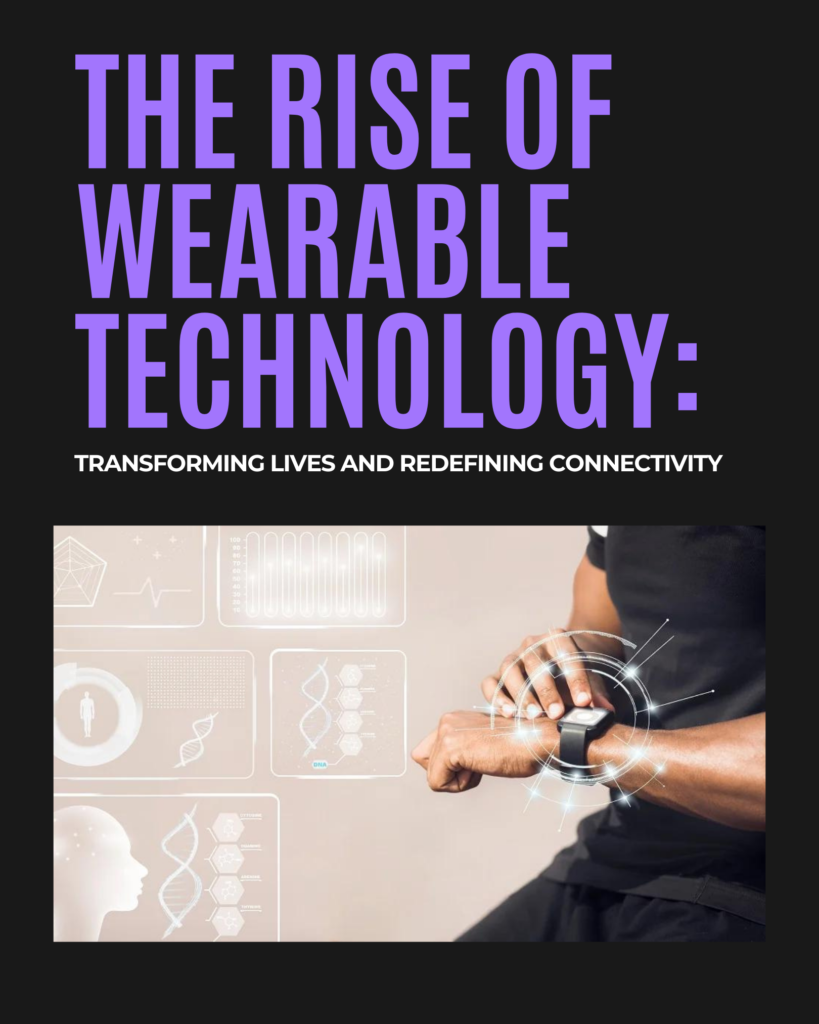
In the ever-evolving landscape of technology, wearables have emerged as a revolutionary force, seamlessly integrating into our daily lives and reshaping the way we interact with the world. From fitness trackers to smartwatches and augmented reality glasses, wearable technology has witnessed a remarkable ascent in recent years, promising to enhance convenience, efficiency, and connectivity.
The Early Days
The journey of wearable technology can be traced back to the humble beginnings of pedometers and early fitness trackers. These devices primarily focused on monitoring basic health metrics, such as the number of steps taken or calories burned. However, as technology advanced, so did the capabilities of wearables.
Fitness and Health
The health and fitness industry has been a significant driver behind the rise of wearable technology. Modern wearables, equipped with sophisticated sensors and algorithms, offer a comprehensive overview of an individual’s health. From heart rate monitoring and sleep tracking to blood oxygen levels and stress management, these devices empower users to take proactive steps towards a healthier lifestyle.
Smartwatches, in particular, have become popular for their ability to merge fitness tracking with smart features, allowing users to receive notifications, control music, and even make calls directly from their wrists. This convergence of health and connectivity has turned wearables into indispensable tools for those looking to maintain an active and informed lifestyle.
Connectivity and Communication
Wearables have redefined the way we communicate and stay connected. Smartwatches have evolved beyond simple timekeeping devices, becoming extensions of our smartphones. With the ability to receive and respond to messages, answer calls, and access apps, these devices provide a level of convenience that was once unimaginable.
Moreover, the integration of voice assistants like Siri and Google Assistant has made interacting with wearables even more seamless. Users can dictate messages, set reminders, and initiate actions through voice commands, freeing them from the constraints of traditional touch interfaces.
Augmented Reality and Beyond
The rise of augmented reality (AR) has added another layer to the capabilities of wearables. AR glasses, like Google Glass and Microsoft HoloLens, promise to transform how we perceive and interact with the world. From providing hands-free navigation to overlaying digital information onto the physical environment, AR wearables have the potential to revolutionize industries such as healthcare, education, and manufacturing.
Challenges and Future Prospects
Despite the significant advancements, wearable technology faces its share of challenges. Concerns about privacy, data security, and the ethical implications of constant health monitoring have been raised. Striking a balance between innovation and safeguarding user rights remains a priority for developers and policymakers alike.
Looking ahead, the future of wearable technology holds exciting possibilities. Continued advancements in materials, miniaturization, and battery technology are expected to result in even more compact and powerful wearables. The integration of artificial intelligence (AI) and machine learning will enhance the capabilities of these devices, making them more adaptive and personalized to individual user needs.

